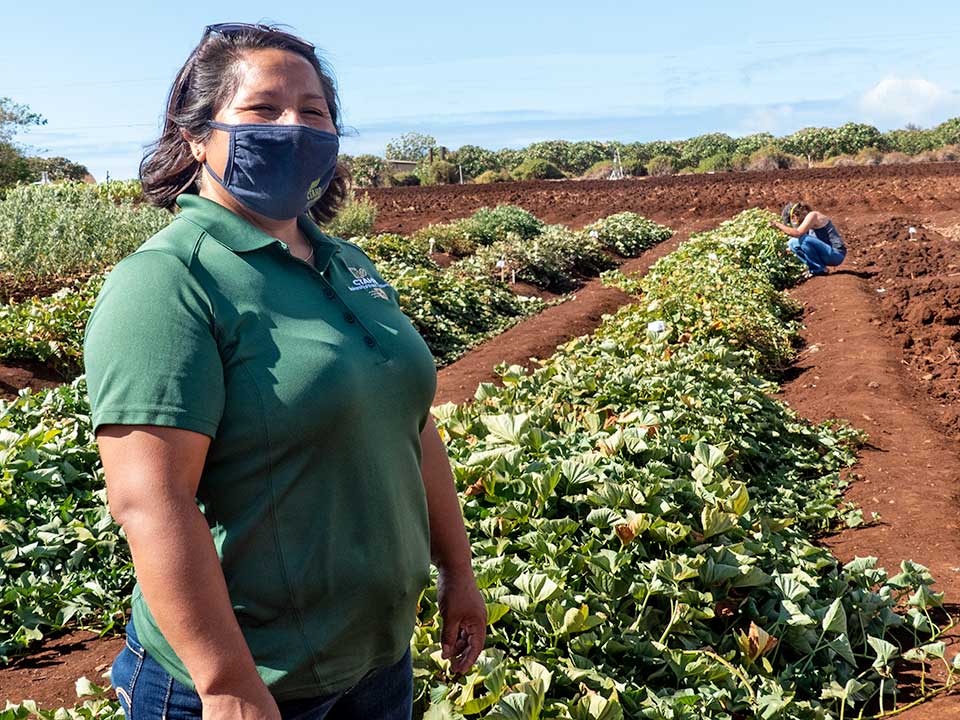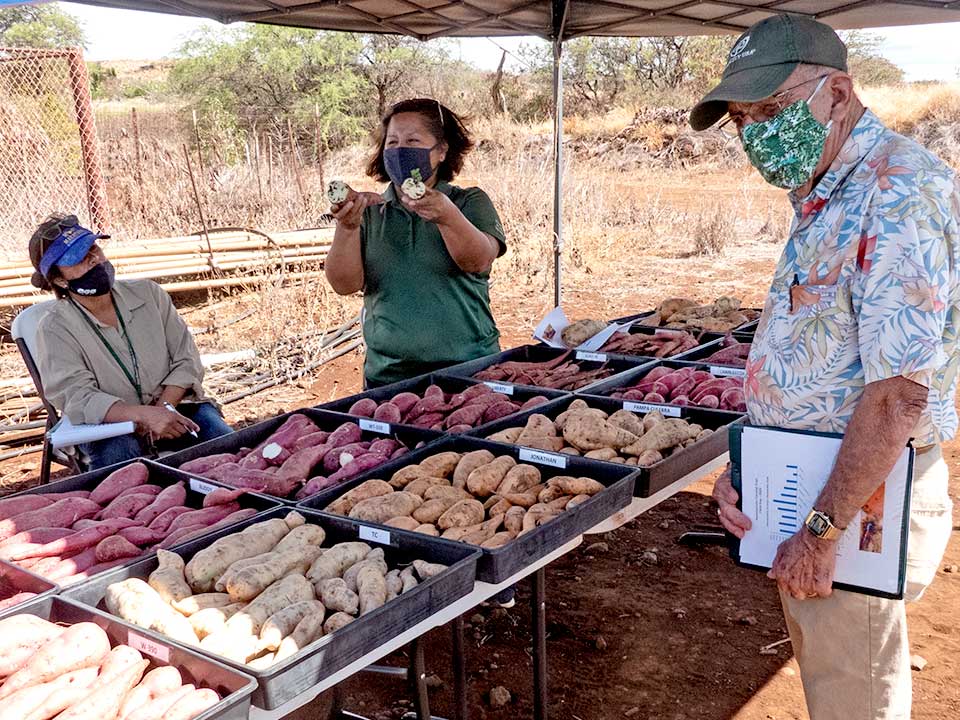University of Hawaiʻi at Mānoa
CTAHR will use a new grant to study ‘Okinawan’ sweet potato
When a virus or virus-like agent infects a vegetatively propagated crop, the negative consequences can go far beyond a disappointing yield, appearance, taste and plant longevity. If the difficult-to-find disease goes undetected inside the propagation material, the problem could be passed on to a new farm, establish itself, and spread even further.
With a new grant from the U.S. Department of Agriculture’s (USDA) Animal and Plant Health Inspection Service, a group of University of Hawaiʻi at Mānoa College of Tropical Agriculture and Human Resources (CTAHR) extension agents and researchers on Oʻahu, Kauaʻi, Maui and the Big Island have joined a national network’s sweet potato research group.
Since 2008, the National Clean Plant Network has brought together growers, scientists and government agencies with the shared goal of safeguarding clean plants and ensuring a sustainable source of disease-free, vegetative propagation materials (such as cuttings, slips, scionwood, etc.).
For their first project, Amjad Ahmad, Rosemary Gutierrez, Roshan Manandhar, Susan Miyasaka, Sharon Motomura-Wages and Jensen Uyeda, along with Jon Suzuki from the USDA’s Daniel K. Inouye U.S. Pacific Basin Agricultural Research Center in Hilo, will focus on ‘Okinawan’ sweet potato, the purple-fleshed variety that is a primary commercial cultivar in Hawaiʻi.
“During the first year, we hope to produce a total of 100 virus-tested ‘Okinawan’ plantlets in the tissue-culture laboratory of the Komohana Research and Extension Center, then distribute to extension agents across the state,” Miyasaka says.
The plan calls for the extension agents to multiply the clean material to produce 500 cuttings, and distribute them to growers. The agents will use either pot or hydroponic cultures under conditions that will minimize any re-introduction of disease, while Suzuki will test for major sweet potato viruses in order to ensure that the propagating materials are clean. If all goes well, by the second year of funding, the agents will be able to ramp up production to distribute 2,500 clean cuttings to growers.

